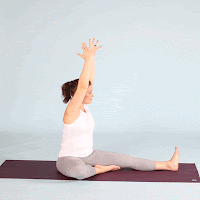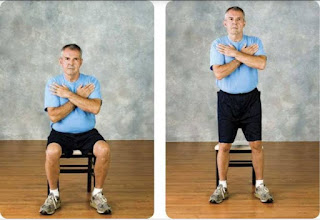FLEXIBILITY ITS TYPES & METHODS TO IMPROVE.
Flexibility means the range of motion available in a joint. Flexibility can be defined as the ability to execute movement with greater amplitude or range.
Flexibility is affected by muscle and joint structure tendons, ligaments and other factors. An individual who has good flexibility can move his or her body joints through a full range of motion in work and play.
Types of Flexibility -:
1. Passive Flexibility -
The ability to do movements with greater distance with external help is called Passive
flexibility. Passive flexibility is always more than active flexibility. In fact, passive flexibility is the foundation for active flexibility.
Ex : stretching exercises with the help of a partner.
2. Active Flexibility -
The ability to do movement for a longer distance without external help is known as active flexibility.
Ex : stretching exercises without any partner.
Active Flexibility is further divided into two categories -:
A. Static Flexibility - Static flexibility is usually required by sports person when he or she remains in static position,
such as diving, sitting, lying and starting position in various sports.
B. Dynamic Flexibility - dynamic flexibility is needed for doing moments with greater distance when an individual is in motion.
Such as include trunk twists, walking lunges, or leg swings against a wall.
Such as include trunk twists, walking lunges, or leg swings against a wall.
Methods to improve Flexibility -:
1. Ballistic Method -
In this method the movement is performed with the swing in a rythmic way. The related joint is stretched with a swing. The stretching exercise can be performed rhythmically with a count. At each count, the joint is stretched to the maximum limit and then it is again flexed. Before performing such exercise appropriate form of is essential because there are maximum chances of overstretching of a joint which causes injury.
2. Dynamic Stretching Method -
This method consist of of controlled legs and arms wings that take you gently to the limit of a range of motion. If an event requires a dynamic moment, it is appropriate to conduct dynamic stretching exercises. Start with the movement at half speed for a couple of repetitions and then gradually work up to full speed.
3. Static Stretching Method -
This method involves gradually easing into the stretch position and holding the position. The amount of time a static strength is held depends on once purpose. If it is a part of cool down then the stretch should be held for 10 seconds. If it is to improve the range of flexibility then hold it for 30 seconds. In static stretching it is advised to move further into the stretch position as the stretch sensation comes to a lower level.
* Some Guidelines for developing or improving flexibility -:
A. The development of flexibility should begin before puberty. It is more difficult to develop flexibility by adults. It is ideal if flexibility exercise are begin from adolescence itself. The flexibility of other joints can be improved during adolescence and even after that.
B. Flexibility is most likely to produce if the exercises are not perform to maintain it.
C. The exercises for improving flexibility should be performed after a complete warm up if proper form up is not performed there may be maximum chances of overstretching the muscles there may be injury of the muscle ligament of joint.
D. Dynamic flexibility depends on static flexibility. Dynamic flexibility is more beneficial than static facts flexibility in the field of games and sports.
E. For effective improvement of flexibility sufficient number of reputation should be performed. It is recommended that at least 10 to 15 lines of each exercise should be performed.
F. If the exercises are performed with the help of a partner then the partner should have proper knowledge about the exercise of flexibility.
G. After doing any exercise for improving flexibility, the exercise to relax the antagonistic muscles should also be performed.












Comments